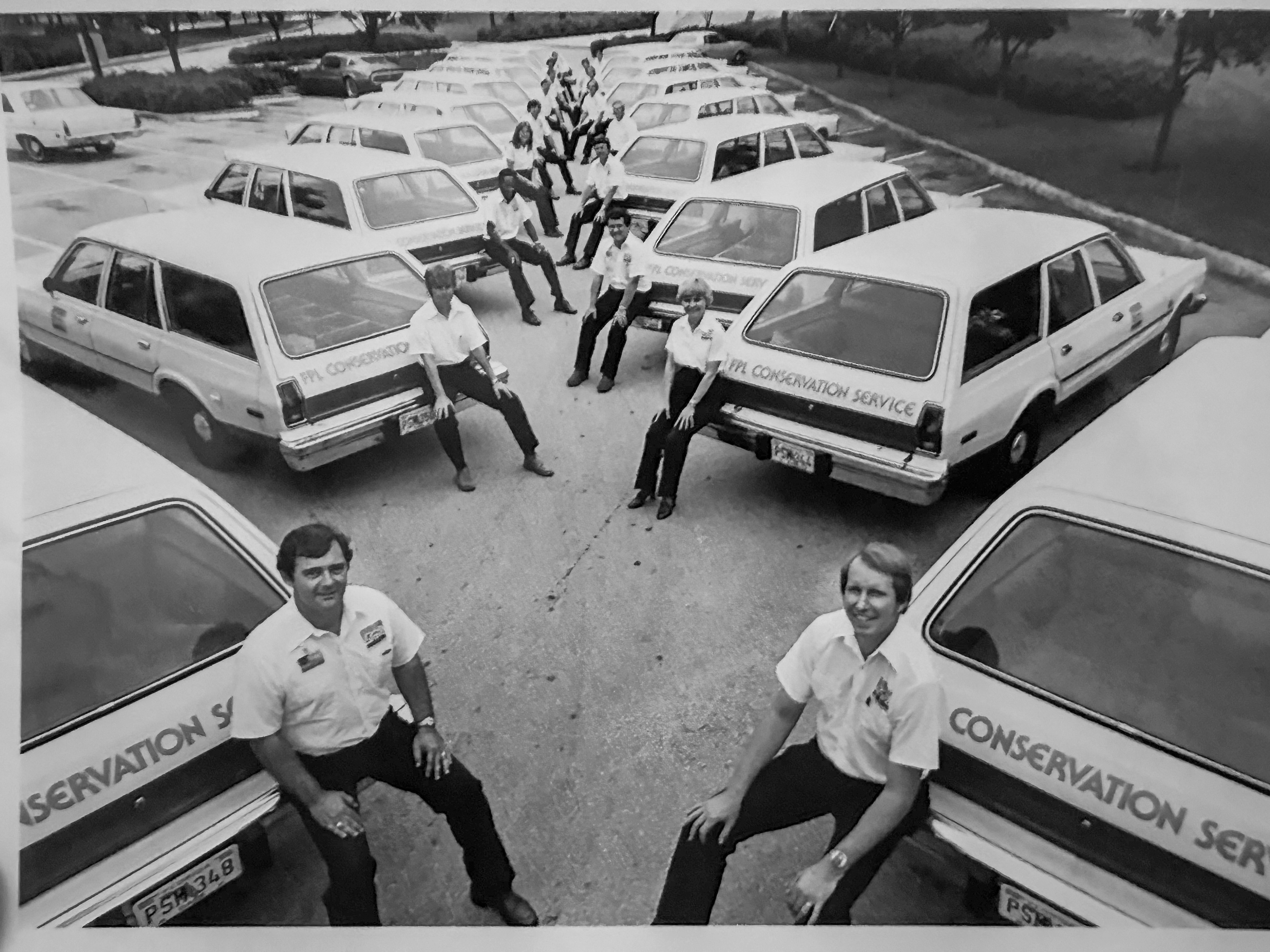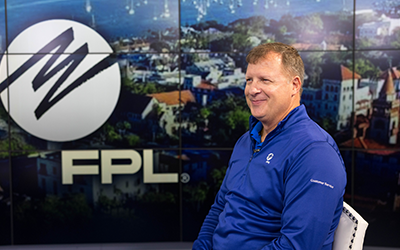
MIAMI, Fla. — It’s a hot, sweltering summer day in 1980, and Nancy Francis is preparing for another day of field work. When she pulls up to a customer's home in her white station wagon branded "FPL Conservation Service," she can see the heat rising in shimmering waves from the pavement.
As an energy auditor, she visits people’s homes to evaluate how they use electricity and suggest ways to cut costs. She inspects their AC system, water heater, windows and attic, providing a thorough examination of every inch of the space.
“We were energy auditors, but they called us attic rats because back then you literally had to go inside attics, crawl and inspect every corner,” a now-retired Francis recalls of her first job at Florida Power & Light Company (FPL). “I had to check people’s attic insulation, ducts, windows and look for air leaks or anything making this family’s electric bill higher than it should be.”
Francis’ uniform—a crisp white-collar shirt paired with a tool belt—reflects the no-nonsense efficiency she brings to her job. But she's armed with more than just the usual measuring tape and flashlight.
In the back seat lies a piece of technology that, at the time, seemed straight out of science fiction: a bulky portable computer connected to an acoustic modem with a coupler.
The modem allowed the laptop to communicate with other computers or networks over standard telephone lines by plugging in the phone’s headset into the coupler. This converted digital signals into sound signals, providing early dial-up internet or remote computer access.
This marvel of 1980s innovation allows Nancy to input detailed data about the home—its square footage, insulation measurements, air conditioning and water heater specifications, and more—directly into the system. In return, it spat out a report with energy conservation recommendations.
“It would suggest AC temperatures, insulation, film installation on windows,” Francis explained. “FPL started this program because the cost of energy was high, and we knew how to help customers reduce their electric bills.”
Francis was part of FPL’s pioneering team of energy auditors in an ambitious initiative to lower customers' bills through education and practical advice.

Since the beginning of the energy audit program in the ‘80s, FPL has conducted more than 4.7 million surveys in homes and businesses.
The company has also dramatically refined its methods for gathering home energy data and educating customers.
Modern energy auditors use thermal imaging guns to detect missing insulation and smart meters to record energy use patterns and voltage levels remotely.
This information is reflected in FPL’s Energy Manager, an all-in-one online tool with personalized insights and tips on each customers’ electricity usage, empowering them to audit their own electricity from home.
FPL's Energy Analyzer, accessible through each customer’s online dashboard, calculates energy usage by appliances, HVAC systems, or lights at the touch of a button.
The company also released a virtual game, House of Savings, teaching people about how to save on electricity in common areas of the home like garages, laundry rooms, kitchens, home offices and more.
“When I look back, FPL was always introducing new technologies that would make us more efficient, more productive, driving down that cost that would help lower customer bills,” said Manny Miranda, who recently retired after four decades with the company.
Before becoming FPL’s executive vice president of power delivery and a renowned industry expert in grid hardening, disaster planning and recovery, Miranda was an “attic rat” too.
With his firsthand knowledge of how customers use energy, Miranda ensured new energy solutions were tailored to their needs. For 41 years, he aligned his career growth with FPL’s mission to lower costs through technology.
“Early on in my career doing energy audits, I learned the value we provide to the customer. It’s rewarding to know what we do daily makes a difference in the communities we live in, providing an invaluable service to our customers,” he said.
Miranda is proud of how far energy audits have come from the attic rat days. Even though energy experts continue to conduct home energy surveys, FPL no longer needs to send someone crawling through attics with a flashlight to find savings.
Customers can audit their own electricity usage from home by logging in to their FPL account to see their energy breakdown.
During the summer months, when the AC is cranked up and energy consumption is at its highest, FPL experts are ready to help without the need for an in-person visit. Most energy audits can now be handled virtually via a phone call or video chat.
“Innovation isn’t about flashy new tools. It’s about using those tools to lower costs and improve life for customers,” Miranda said. “Just like an attic rat of old, we are still relentlessly seeking out energy savings – just better equipped to achieve it.”
FPL energy experts continue to visit customers can audit their own electricity from home by logging in to their FPL account to see their energy breakdown with the free Energy Manager tool.





